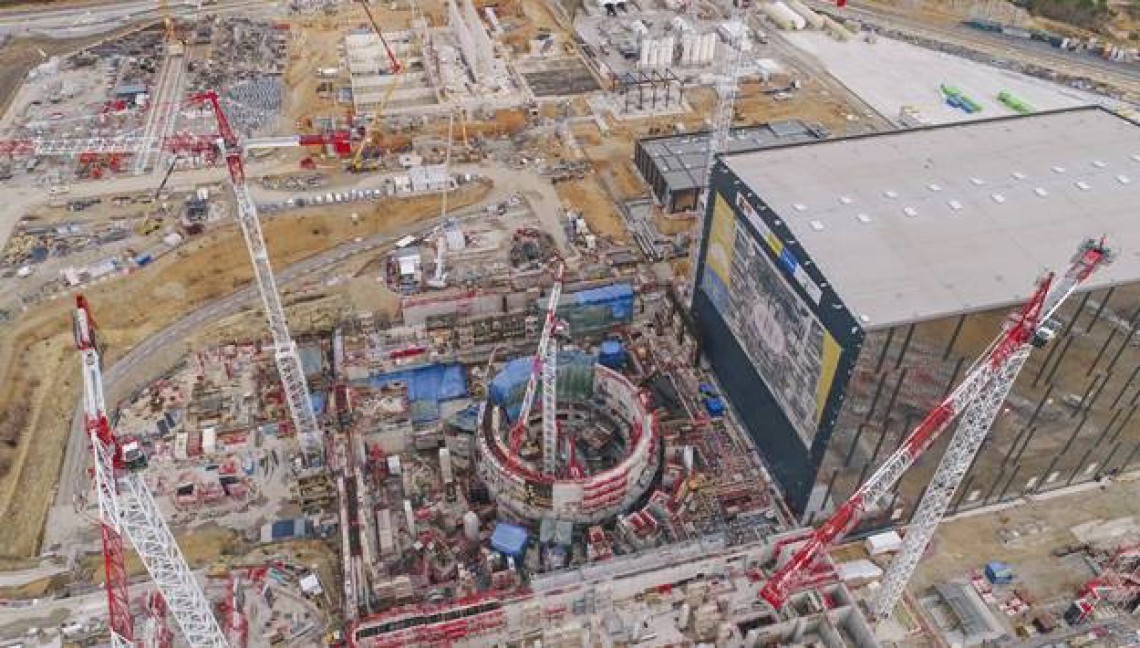Europe’s investment in the ITER fusion project: mastering the power of the sun and the stars


The EU is a strong advocate for sustainability. For years it has been taking action to cut down the emission of greenhouse gases, fighting climate change and trying to make Europe more self- sufficient in the field of energy, given the fact that its import dependency is particularly high for crude oil (90%) and natural gas (69%). Half of the energy we consume is imported at a cost of 1 billion EUR per day. So how can we reconcile our potential to grow without putting at risk our planet’s well-being?
The answer lies in the energy mix of the future. And fusion can be part of it. The power of the sun and stars has several merits worth considering. Its fuel- isotopes of hydrogen- is abundant and with just small amounts we can release a lot of energy. Hydrogen the size of a pineapple can offer as much fusion energy as 10 000 tonnes of coal. The fusion reaction is inherently safe and poses no risk of a meltdown. There are no greenhouse gases and no long-lasting waste for the future generations. For this reason, the EU has invested in ITER, the biggest scientific collaboration that will test the feasibility of fusion power.
ITER brings together the countries of EURATOM (EU-28 plus Switzerland), China, Japan, India, the Republic of Korea, Russia and the US. The Parties represent 80% of the global GDP and half of the world’s population. Scientists all over the world are involved in R&D activities linked to the project and companies are manufacturing millions of components that will be assembled in Cadarache, south of France, where the project is located.
Europe, being the host of the biggest fusion experiment, is financing nearly half of it. Fusion for Energy (F4E), the EU body which was set up ten years ago to manage the European contribution to ITER, counts with approximately 450 members of staff working in Barcelona (Spain), Cadarache (France) and Garching (Germany). Since its establishment, F4E has invested in Europe’s economy 4 billion EUR by awarding more than 900 contracts to 440 companies, research organisations, and to 1500 of their subcontractors, working for the ITER project. Its impact in making Europe more competitive can be widely felt in the socio-economic fabric of our continent. Think of the creation of new jobs and skills, partnerships between big and smaller companies, and the transfer of know-how to develop new applications which could enter into new markets. To find out more about Europe’s business potential in ITER and to read the views of some of our contractors click here.
In December 2017, ITER celebrated an important milestone having reached 50% completion of the total construction work needed for the first operation stage – so called First Plasma. The progress on the ITER construction site, which consists of 39 buildings and infrastructures under Europe’s responsibility, has been impressive. Nearly 2000 people are working daily on a platform that is nearly 42 hectares. Click here to fly over the site and become familiar with the works carried out. The main building (Tokamak Complex) where the ITER machine will be installed is reaching its final level (fourth floor), and the progress of various auxiliary buildings such as the Cryoplant, which will generate the cold temperatures needed, and the Magnets Power Coversion building, which will energise the powerful magnets that will confine the super-hot plasma, are advancing. More equipment has started arriving on-site. For example, the first tooling has been delivered to the Assembly Hall, and the first Cryoplant tank has been installed.
In terms of manufacturing, Europe has celebrated a fair share of achievements. In the Spring of 2017, the most high-tech magnet in history was unveiled before going through the final stages of production. ITER will require powerful magnets to confine the hot plasma and control its shape and stability. Europe will have to deliver ten Toroidal Field coils and five Poloidal field coils. Works have also been advancing with the production of the vacuum vessel, the “metallic shell” which will host the fusion reaction. Europe is responsible for the fabrication of five sectors entrusted to a consortium of companies. Last but not least, in collaboration with the ITER Organization and Consortium RFX, F4E has invested in a Neutral Beam Test Facility to develop powerful heating systems that will eventually be used to raise the temperature of ITER’s plasma. The most powerful negative ion beam source to date has already been installed in its vacuum vessel and first operations are expected to start in summer.
ITER can be described as a big technology puzzle which will push forward our knowledge frontiers. It will give us the answer regarding the feasibility of fusion energy, its cost and financial return. Ultimately, however, it will help policy-makers take an informed decision on the energy scenarios of the future. Europe’s commitment to see this project through offers our industry and scientific community an unparalleled opportunity to demonstrate its strength, to grow and to learn how to deliver the energy of the future. The challenges we currently face require the broadest possible energy alliance to guarantee our citizens access to safe, sufficient and sustainable power supply. Let’s work together to deliver it!
To keep up to date with the progress of Europe’s contribution to ITER subscribe to F4E News and visit regularly F4E’s website.
Council conclusions on ITER of April 12th 2018
Source: © European Union, 1995-2017

